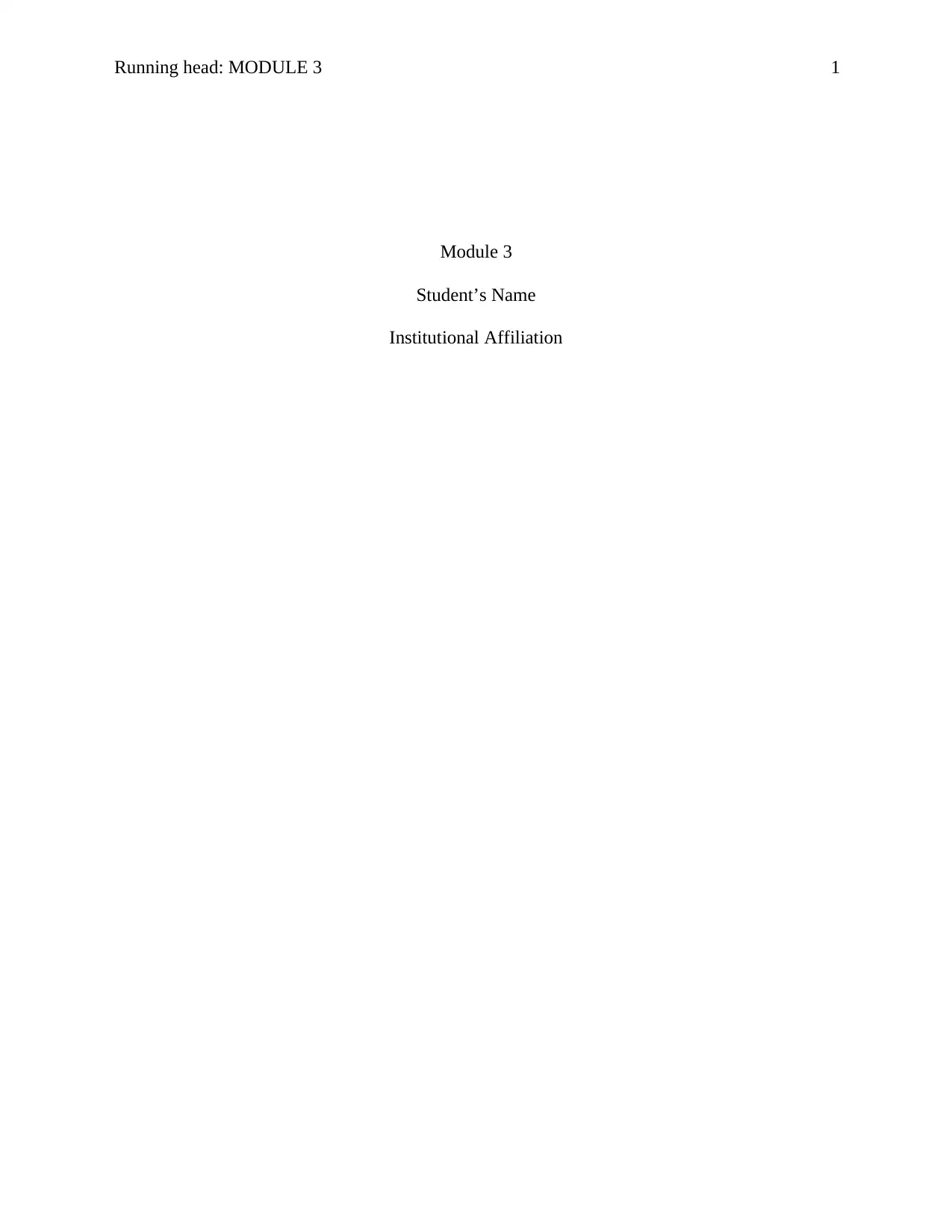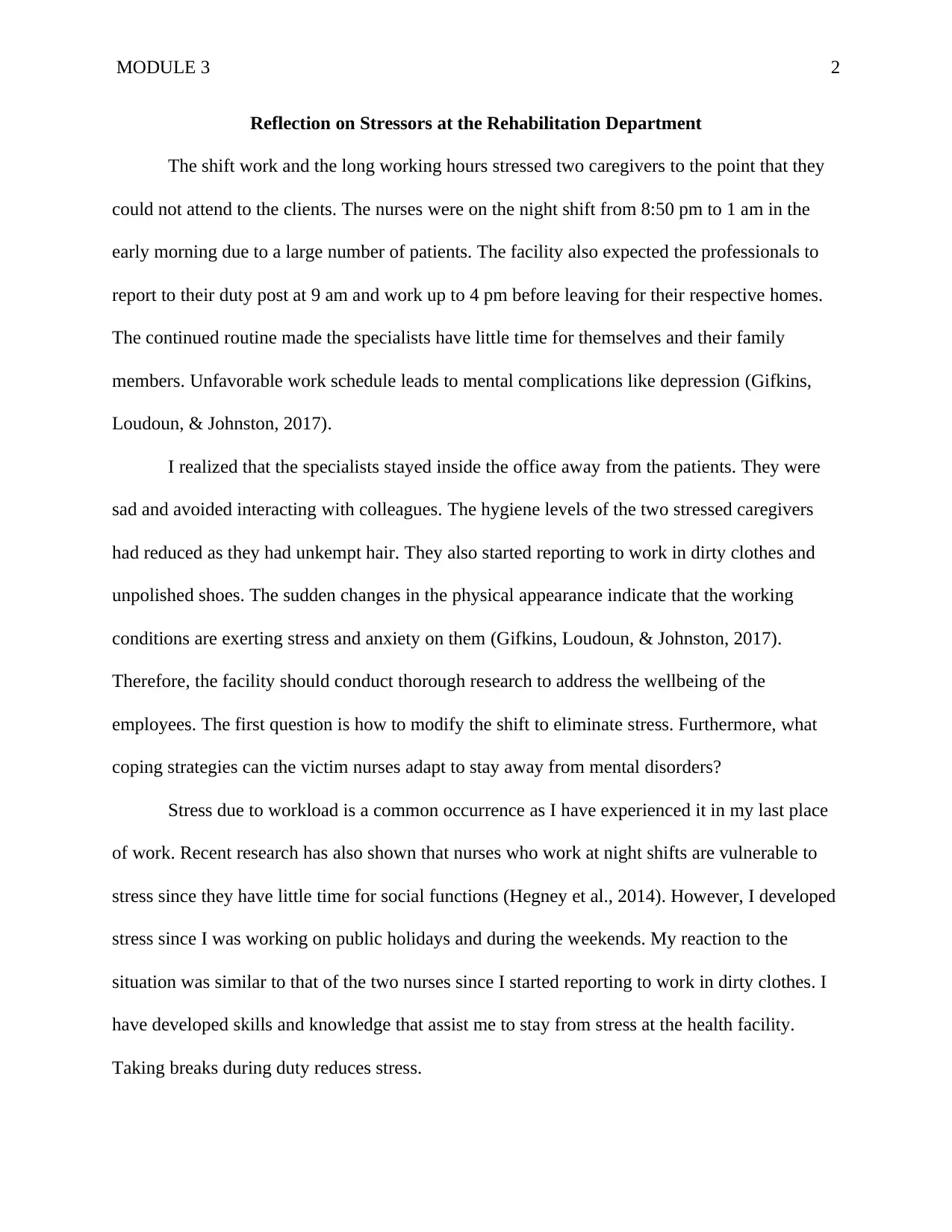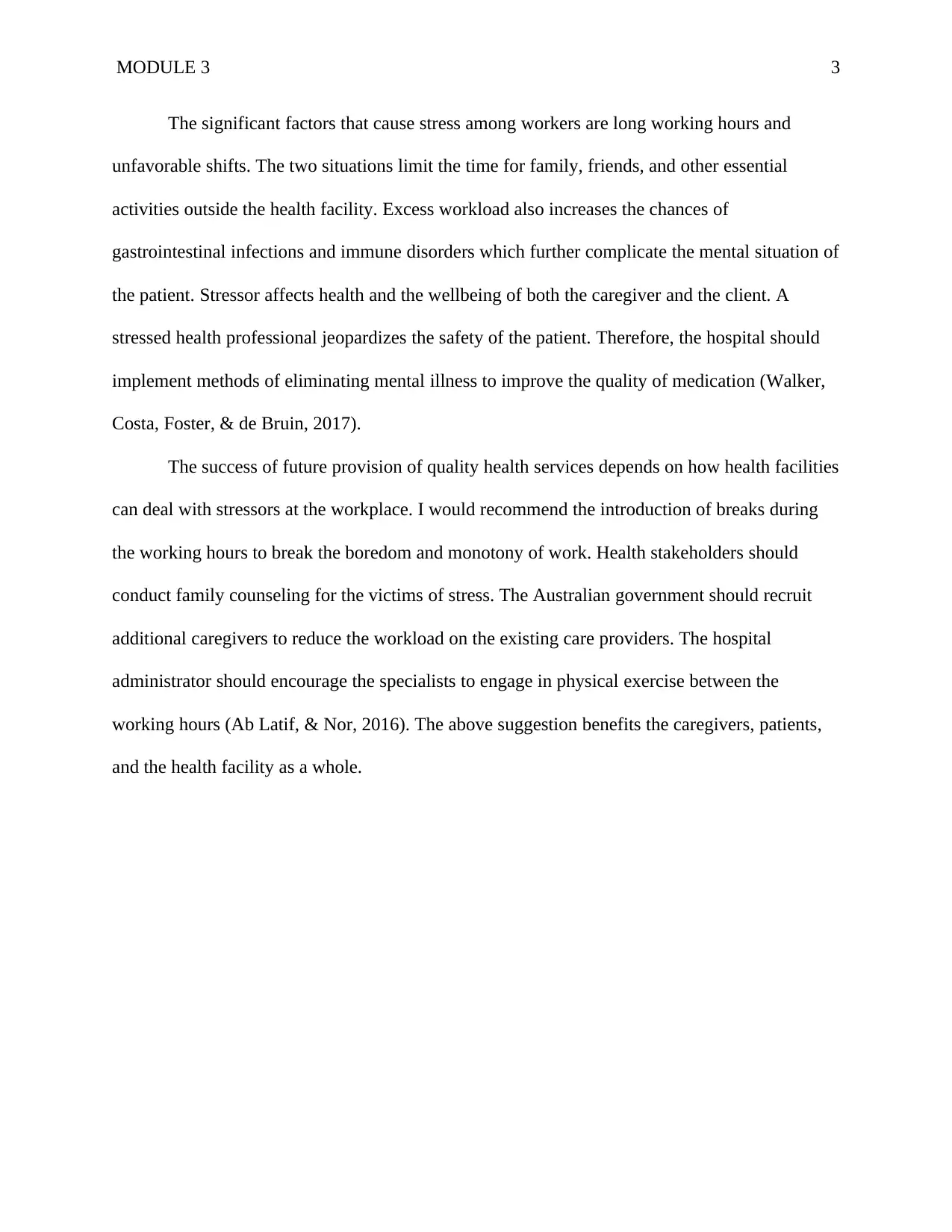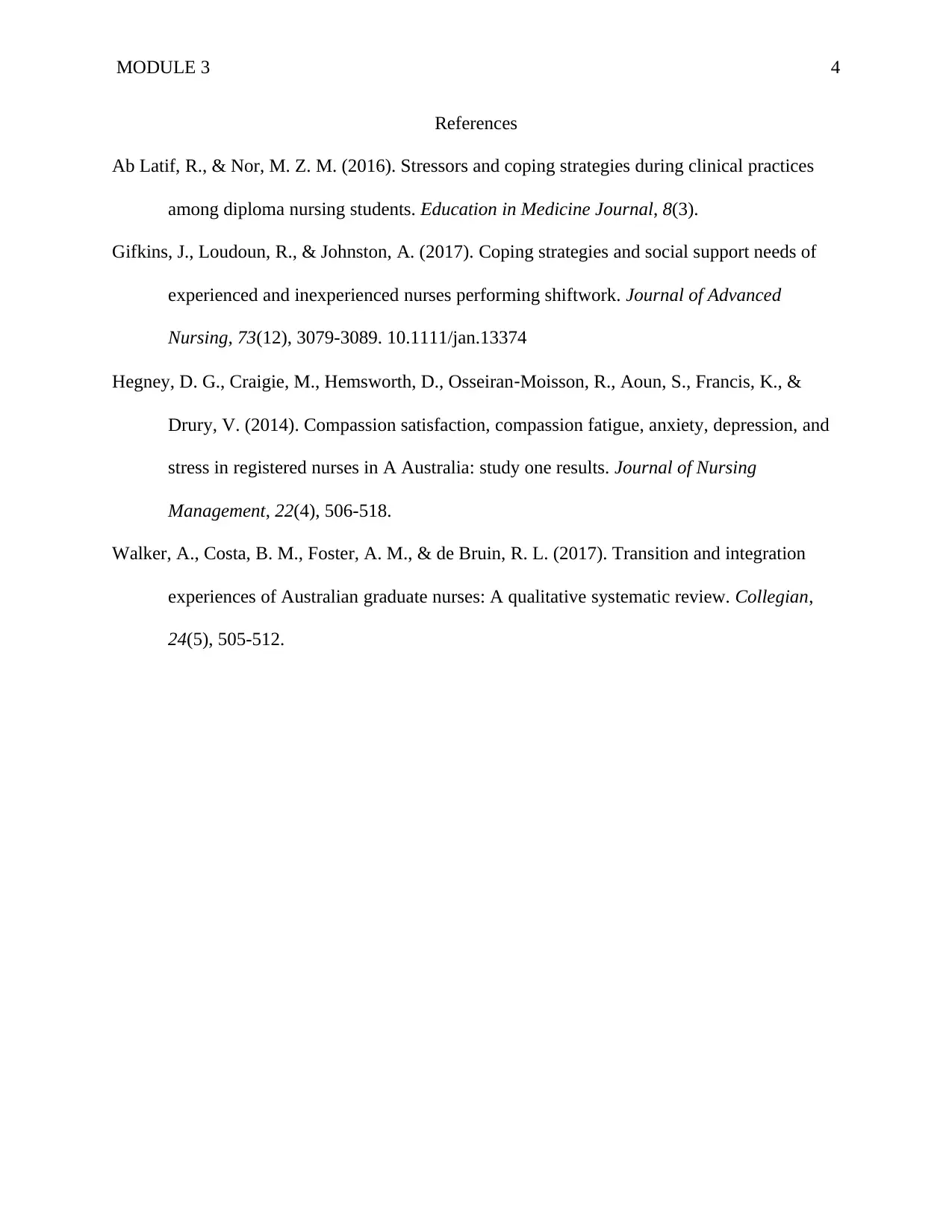NRSG370 Clinical Integration: Reflecting on Stressors in Rehab
VerifiedAdded on 2023/06/04
|4
|812
|313
Essay
AI Summary
This essay reflects on stressors experienced by caregivers in a rehabilitation department, specifically focusing on shift work, long hours, and their impact on mental health and wellbeing. The author observes changes in the caregivers' behavior and appearance due to stress, drawing parallels to personal experiences. The essay highlights the negative consequences of stress on both caregivers and patients, emphasizing the importance of addressing workplace stressors to improve the quality of healthcare. Recommendations include introducing breaks, family counseling, recruiting additional staff, and encouraging physical exercise to mitigate stress and improve overall wellbeing within the rehabilitation facility. This document is contributed by a student and available on Desklib, a platform offering study tools for students.
1 out of 4








![[object Object]](/_next/static/media/star-bottom.7253800d.svg)